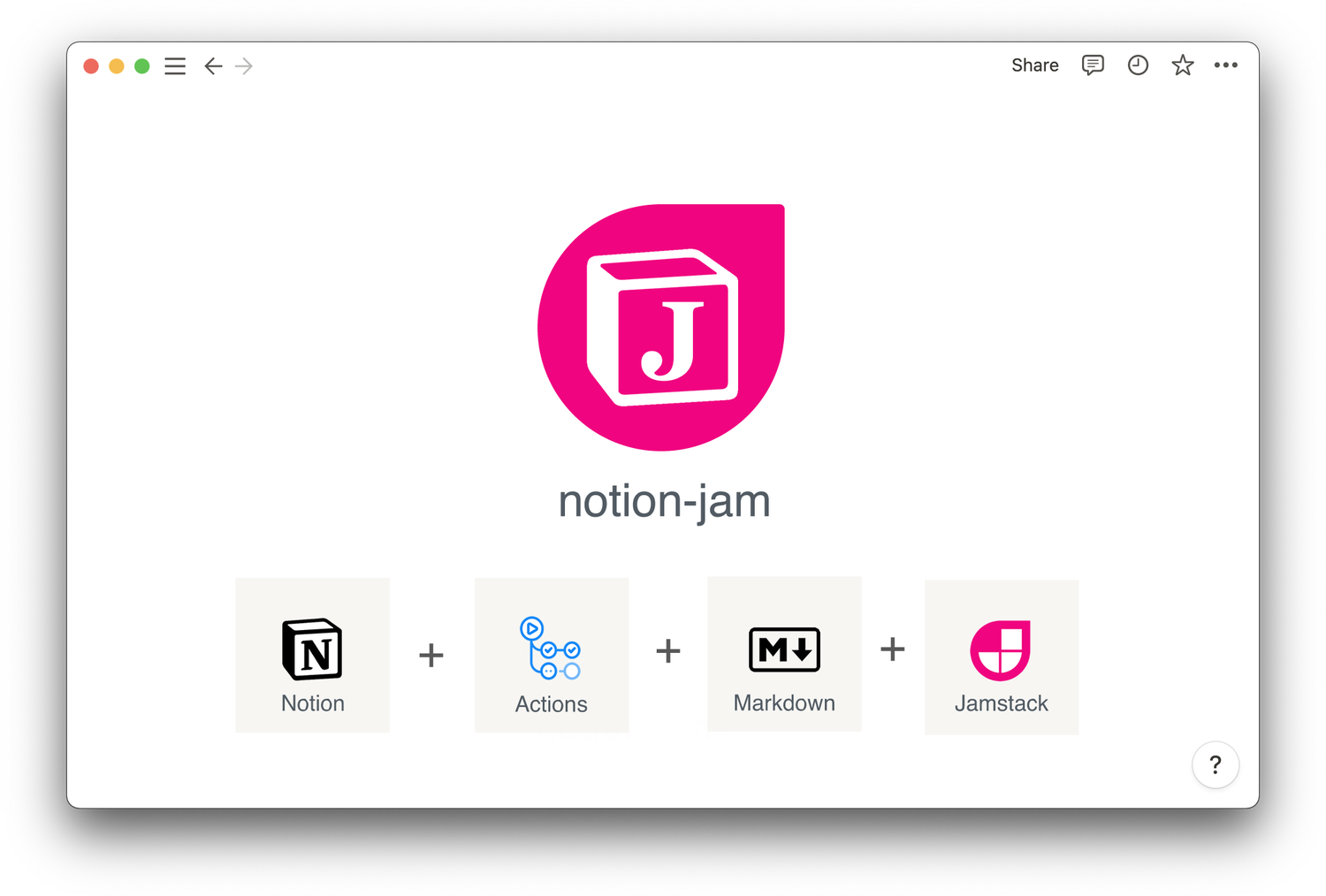
将页面从概念同步到 GitHub 以用作静态网站


github.com/{user}/{repo}/settings/secrets/actionsNOTION_SECRET of Notion to your repository secret.

.github/workflows/**.yml of your repository# This is a basic workflow to help you get started with Actions
name: NotionJAM
# Controls when the workflow will run
on:
schedule:
- cron: "0 21 * * *" # daily
push:
branches: [master, main]
# Allows you to run this workflow manually from the Actions tab
workflow_dispatch:
# A workflow run is made up of one or more jobs that can run sequentially or in parallel
jobs:
# This workflow contains a single job called "build"
build:
# The type of runner that the job will run on
runs-on: ubuntu-latest
# Steps represent a sequence of tasks that will be executed as part of the job
steps:
# Checks-out your repository under $GITHUB_WORKSPACE, so your job can access it
- uses: actions/checkout@v3
- name: notion-jam
uses: victornpb/notion-jam@v0.0.10
with:
NOTION_SECRET: ${{ secrets.NOTION_SECRET }}
NOTION_DATABASE: https://www.notion.so/9e34cee9f5bd4c4aaf0d2eaf73ead47b
FILTER_PROP: Status
FILTER_VALUES: Published
CONVERT_PROP_CASE: snake
ARTICLE_PATH: content/posts/{title}/README.md
ASSETS_PATH: ./
PARALLEL_PAGES: 25
PARALLEL_DOWNLOADS_PER_PAGE: 3
DOWNLOAD_IMAGE_TIMEOUT: 30
SKIP_DOWNLOADED_IMAGES: true
DOWNLOAD_FRONTMATTER_IMAGES: true
- name: Save changes
uses: stefanzweifel/git-auto-commit-action@v4
with:
commit_message: Commit changes